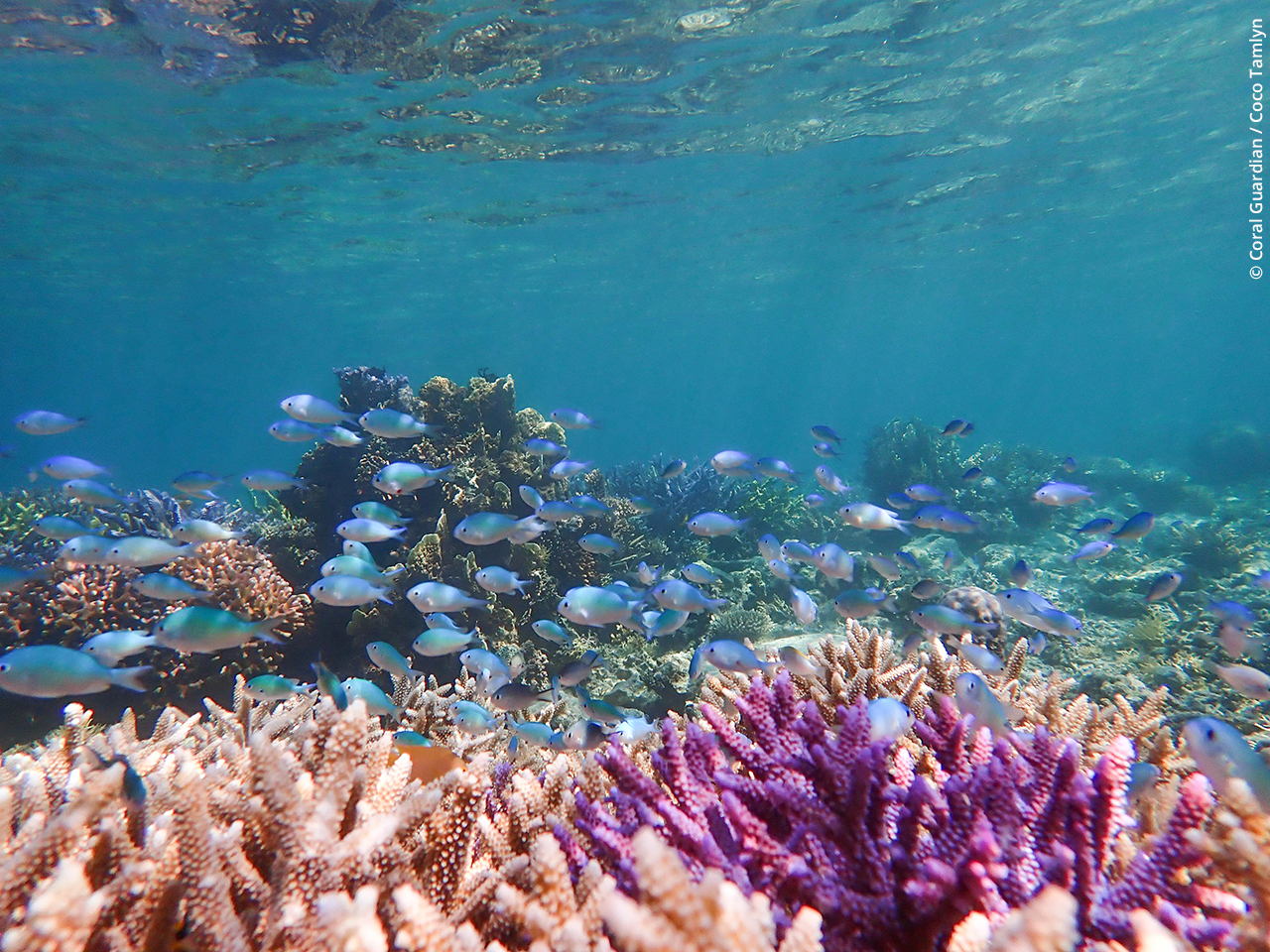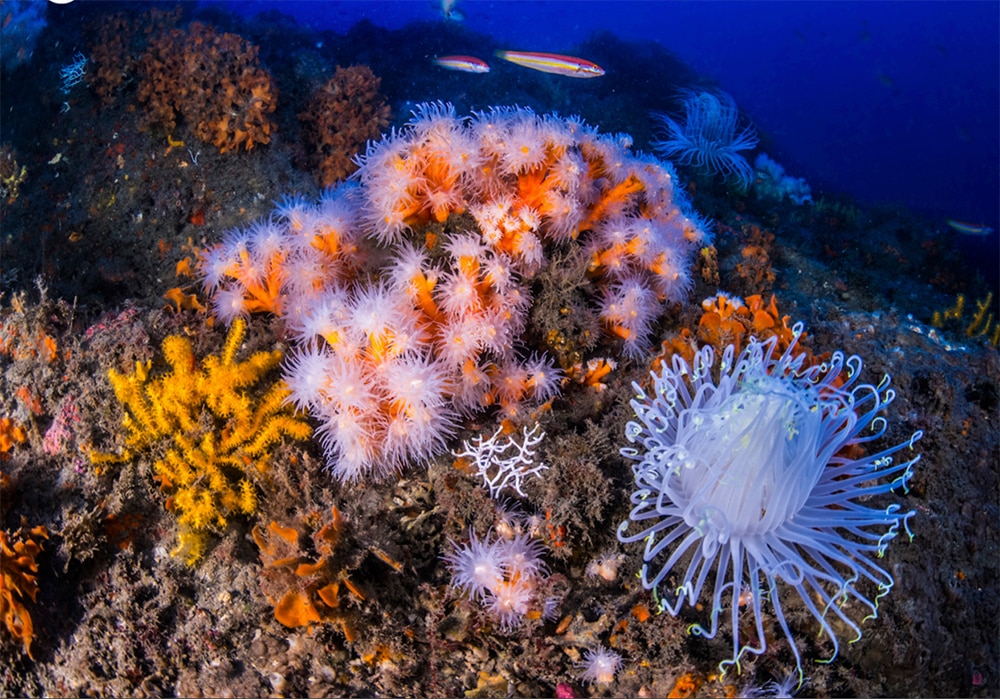The challenge of rebuilding marine life by 2050

A small step for man, a big step for the ocean and its inhabitants
We are facing a key moment where we can choose the legacy of future generations: an irreversibly disturbed ocean or a resilient and dynamic ocean. Policies to reduce environmental pressures and restore marine life were introduced after the 70s, and it is only now that the benefits have become visible on a large scale. Indeed, in the past years, there has been an increase of initiatives in favour of the restoration of the ocean, such as better management of fisheries and the protection of breeding habitats for marine species. These actions led to a lot of positive impacts. For example, if we look at the IUCN (International Union for Conservation of Nature) Red List, the proportion of marine species that are threatened with global extinction decreased from 18% in 2000 to 11.4% in 2019. The MPAs (marine protected areas) which for now represent 7.4% of the ocean, are targeting a proportion of 10% of the protected ocean zone for 2020, 30% by 2037 and 50% by 2044.
A scientific article published in April 2020 has made the headlines because it concludes that a significant reconstruction of marine life by 2050, therefore within 30 years, is possible. According to the article, this challenge is achievable if actions to reduce environmental pressures – such as climate change – are deployed on a large scale. Special care should also be taken in preserving habitats and in attempts to restore populations and ecosystems.
In the article, authors insist that efforts to rebuild marine life cannot aim to restore the ocean as it was in the past, so we should now move forward and look for new templates.
Key actions vary by species and ecosystems : for corals, it is climate change mitigation and pollution that are critical, when for the recovery of marine vertebrates and deep-sea habitats it is the management of fisheries and natural habitats that should be prioritized.

Figure 1 : Distribution of ecosystem restoration projects for coral reefs and oysters (Source : Duarte et al., 2020)

Figure 2 : Reported restoration projects over time (Source : Duarte et al., 2020)
We can see in Figures 1 & 2, the proliferation of restoration initiatives at a global level prove a desire to act. Even if it happens on a small scale, the more we talk about it, the more these positive initiatives will multiply and the more they will have a global impact on our oceans.
Focus on coral reefs
Of all the marine species quoted in this article, coral reconstruction carries the highest risk of failure. Pressures such as overfishing and pollution have led to their decline and this has now worsened with bleaching events linked to global warming, ocean acidification and an increased cyclonic activity.
The recovery of corals, of which tens of hectares have been reconstructed so far, varies between a few millimeters and a few centimeters per month depending on the species. Coral restoration can therefore take a long time depending on the target regions.The biggest problems encountered during the implementation of coral restoration programs are, among others, the cessation and severity of ecosystem disturbers. This therefore explains the high risk factor for this type of project. To get an idea, for disturbances related to trawlers or hydrocarbons, recovery times can vary from 30 years to more than a century.
Nevertheless, it has been observed that coral bleaching is now occurring at warmer temperatures than before (about 0.5°C higher). This suggests that the remaining corals have adapted and are somewhat less vulnerable to temperature changes. Another good news for corals is the growing knowledge of how their ecosystem works and the many emerging technologies of the past decade that aim to restore them.
Reducing pollution and climate change, improving water quality and establishing protected areas are key actions to promote coral restoration. It is also important to raise awareness among populations that healthy coral reefs are synonymous with a significant abundance of biodiversity, and that they also protect against rising sea levels and storms.
2050, an achievable challenge?
The time it takes to rebuild marine life depends on past problems, which are often significant. Generally, maximum recovery rates for marine populations vary from 2 to 10% per year. Duarte and his team hypothesize that to recover 50 to 90% of the many elements of marine life, it would take 30 years. They recognize that some slow-growing species with severely affected habitats may take longer, such as corals. Also, for this recovery of 50 to 90%, the major pressures such as climate change have to be mitigated soon. This recovery requires financial support estimated at least at $10 billion to $20 billion per year to expand protection measures and support restoration. Thus, if and only if all these conditions are met, we can envisage a considerable resumption of marine life in the 21st century.
But until then…
Failure by governments to meet commitments to reduce environmental pressures could affect the 2050 target, and represent a real threat for the future of the oceans. Despite all the persistent challenges, such as waste and pollutants, or unexpected natural or social events, positive initiatives must intensify. Emphasis should be placed on the preservation and restoration of key species as well as on ecosystems and their functions. Improving ocean management is the 14th of the 17 UN Sustainable Development Goals and is shared by politicians in many countries. However, we must not forget that this challenge remains achievable only through a collective effort to deeply change our habits, so that nature can take back its rights.
This article is entirely based on the following study, to find out more : Duarte et al. Rebuilding marine life. Nature 580, 39–51 (2020). https://doi.org/10.1038/s41586-020-2146-7
Ces articles pourraient vous intéresser

Sponsor Spotlight : Matthias and Trent from Eco Elio
Tell us a bit about yourself 🙂 We are Matthias and Trent – cofounders and managing directors from eco elio! We are an innovative sunscreen…
25 April 2023CALL FOR PROJECT PROPOSALS
For the development of a coral reef conservation programme in partnership with Coral Guardian. About Coral Guardian Coral Guardian is a French non-profit that was…
13 April 2023Gender equality in marine science? Not yet…
Acknowledgments to Sylvaine Giakoumi Gender equality is an unavoidable topic that has been defined as a United Nations goal for 2030 , along with…
20 March 2023
Launch of the first participatory marine conservation project of the Mediterranean sea
We’re now located in the Mediterranean Sea with the launch of the first participatory marine conservation project in this region of the world. This project,…
17 February 2021
